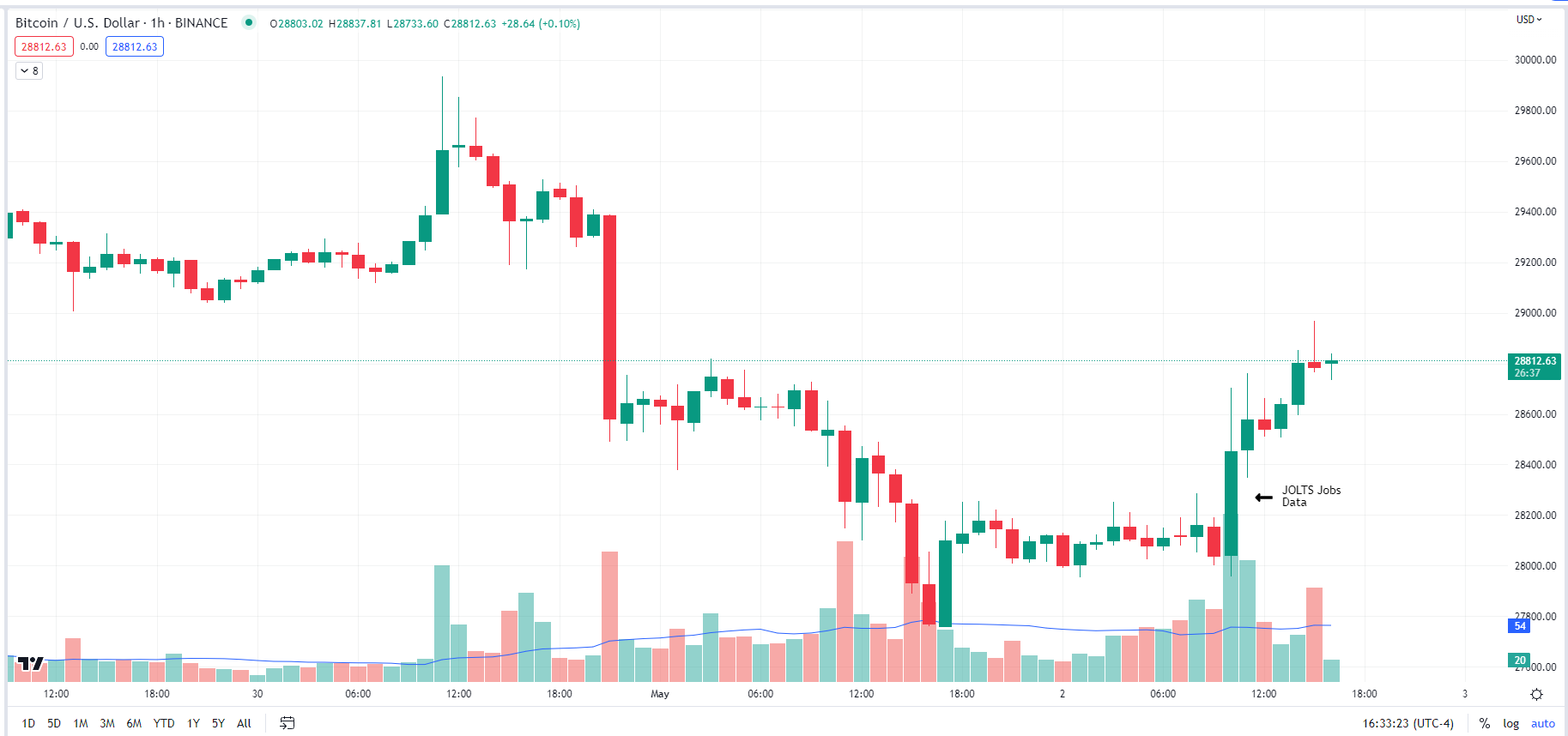Bitcoin Bulls Encounter Headwinds as Monthly Stochastic Indicator Trends Downward: Analyst
Bitcoin's Most Oversold Levels Since Covid Crash Indicated by Key Metrics
Bitcoin and U.S. Real Yields Forge Strongest Inverse Link Since April
Bitcoin (BTC) and Ether (ETH) exhibited a positive reaction after the release of the Job Openings and Labor Turnover Survey (JOLTS) data on Tuesday, with both cryptocurrencies rising nearly 2% within an hour.
The latest report revealed a drop in US job openings to 9.6 million in March, falling below the anticipated figure of 9.775 million and representing the lowest level since April 2021.
In recent times, experts monitoring the cryptocurrency market have interpreted a deterioration in job-related data as a positive signal for the prices of digital assets. This is because:
- The Federal Reserve plans to keep increasing interest rates until it is confident that inflation has stabilized.
- Raising interest rates tends to have a detrimental effect on the prices of assets, including cryptocurrencies.
- Inflation will only subside if there is a slowdown in the labor market.
In essence, in the current climate, unfavorable employment data is considered a beneficial development for markets.
In general, it is challenging to attribute price fluctuations solely to macroeconomic reports with complete certainty. Nevertheless, the timing of the abrupt increases in both the price and trading volume of Bitcoin on Tuesday strongly implies that BTC reacted to the jobs report. However, prices eventually stabilized for the rest of the day after the initial surge.
The crypto markets might be experiencing a preliminary shift in anticipation of the more widely publicized U.S. central bank interest rate decision scheduled for Wednesday, even though the projected 25 basis point hike is probably already factored into the market.
An interesting observation is that other high-risk assets, particularly equities, did not respond in the same manner as the employment data. The S&P 500, Nasdaq Composite, and Dow Jones Industrial Average (DJIA) all experienced declines after the data was released.
The correlation between cryptocurrencies and equities has weakened in the current year. The previously strong correlation of 0.80 between Bitcoin (BTC) and the S&P 500 has reduced to a relatively mild current correlation of 0.27.
Based on on-chain metrics, it appears that the markets may experience a period of calm in the coming days as investors await the Federal Reserve's decision on interest rates. The exchange balances for both BTC and ETH have remained relatively stable and are currently at similar levels to those observed at the beginning of 2023.
Typically, investors tend to deposit their BTC and ETH on crypto exchanges when they intend to sell, indicating a potential reduction in their holdings. However, despite significant year-to-date gains of 73% and 56% for BTC and ETH, respectively, there has been a relatively small uptick in exchange balances. This suggests that investors are choosing to hold on to their positions, indicating a strong belief in the future potential of these assets, despite the recent price increases.
While it's important to not overestimate its impact on future price movements, the current stability in the market is indicative of the crypto market's resilience and a general sentiment among investors to maintain support at current price levels.
Source Coindesk

















